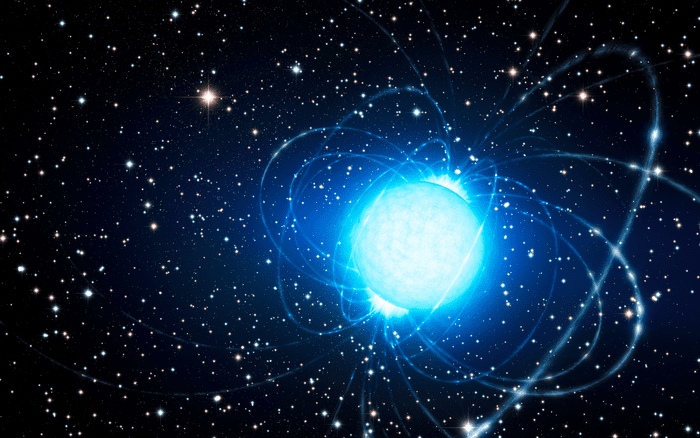Magnetars are one of the most interesting things you will find in the universe. That’s kind of saying a lot since there are a plethora of remarkable objects in the void of space. The magnetic field of one of these neutron stars is generally a thousand trillion times stronger than our own planet’s. Now researchers have found one 13,000 light-years from Earth which could actually be a star with a solid surface.
“This was completely unexpected,” said co-lead author Professor Silvia Zane (UCL Mullard Space Science Laboratory), a member of the Imaging X-ray Polarimetry Explorer (IXPE) science team. “I was convinced there would be an atmosphere. The star’s gas has reached a tipping point and become solid in a similar way that water might turn to ice. This is a result of the star’s incredibly strong magnetic field.”
It is still a subject of debate whether or not magnetars and other neutron stars have atmospheres. However, the new study is the first observation of a neutron star where a solid crust is a reliable explanation.
The research, led by the University of Padova and published in the journal Science, used data from a NASA satellite, the IXPE, launched last December. The satellite, developed by NASA and the Italian Space Agency, provides a new perspective on X-ray light in space by measuring its polarization – the direction of the light waves’ wiggle.
The group examined IXPE’s observation of magnetar 4U 0142+61 in the Cassiopeia constellation. This was the first observation of polarized X-ray light from a magnetar.
Magnetars are extremely dense remnant cores of massive stars that exploded as supernovae at the end of their lives and, as the name would suggest, have the most powerful magnetic field in the universe. They emit bright X-rays and have erratic periods of activity, with bursts and flares that can release millions of times more energy in one second than our Sun does in a year. Magnetars are thought to be propelled by magnetic fields 100 to 1,000 times stronger than standard neutron stars.
The researchers discovered far less polarized light than would be expected if the X-rays had passed through an atmosphere. Polarized light is light with all frequencies wiggling in the same direction, indicating that the electric fields vibrate only in one path. An atmosphere acts as a filter, allowing only one polarization state of light to pass through.
The team also discovered that for higher-energy light particles, the angle of polarization – the wiggle – flipped by exactly 90 degrees compared to lower energies, as predicted by theoretical models if the star had a solid crust surrounded by an external magnetosphere filled with electric currents.
Now the race is on for more observations. The group plans to study hotter magnetars to see the roles of temperature and magnetic field strength on the outer surface of the stars.
“Like with water, temperature is also a factor – a hotter gas will require a stronger magnetic field to become solid,” said lead author Roberto Taverna, from the University of Padova. “A next step is to observe hotter neutron stars with a similar magnetic field, to investigate how the interplay between temperature and magnetic field affects the properties of the star’s surface.”



